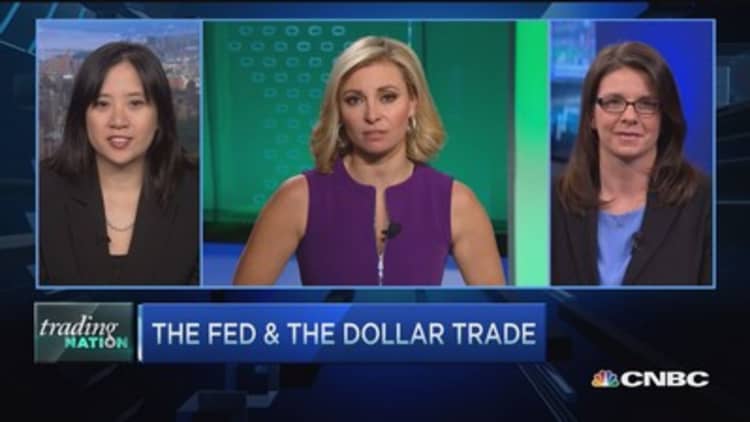


The Fed has spoken but right now, what is moving bonds may have a German accent. That's because bond yields outside the United States may be putting a lid on how high American rates go.
On Wednesday, the U.S. Treasury 10-year note saw its yield move above 2 percent for the first time since early March despite the widely held notion that the Federal Reserve may wait until later this year before it starts raising rates.
Even so, there are many market participants who are instead looking for rates to fall much lower.
"If you look at the sentiment regarding bonds, it has become much more optimistic versus to where it was 12 to 15 months ago," said Ari Wald, head of technical analysis at Oppenheimer & Co. "You have a lot more calls for 1 percent" yields on the U.S. 10-year note.
Wald sees another factor at play in the U.S. bond market: what's going on in Europe. With the help of the European Central Bank's bond-buying program, bond yields in much of the Eurozone (with of course Greece being one such notable exception) have been dropping. Yields on bonds move in the opposite direction of prices. Thus lower yields mean higher bond prices and vice versa.
It's not just in lower-risk countries like the Netherlands and Belgium where bond yields trade below that of the United States. Even in Spain and Italy, rates are lower than their American counterparts.
But Wald sees German yields as showing the clearest signal that U.S. rates may soon see a top. He notes that the spread between U.S. Treasury 10-year notes and German bunds of the same maturity are at their widest in well over a quarter of a century. Treasuries traded at 2.046 percent on Wednesday evening while the bunds were at just 0.285 percent. Wald does not see such a wide spread lasting indefinitely.
In fact, for the past several days, many of the world's most prominent bond traders expressed weariness of the bund yield's record lows. Janus Capital's Bill Gross called the German 10-year bund "the short of a lifetime. Better than the pound in 1993."
Adding his voice to the choir against the German bund is DoubleLine's Jeff Gundlach, who said he might make "amplified bets" against the bund.
In turn, that may also mean a tightening of the spread if Wald's technical analysis is correct. "As the [U.S. Treasury] 10-year gets back to its 200-day moving average at around 2.2 percent, I think it would be a great time to buy some bonds," he said. "That's the ceiling right there."
Want to be a part of the Trading Nation? If you'd like to call into our live Monday show, email your name, number and a question to TradingNation@cnbc.com






